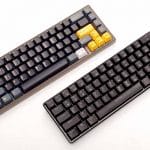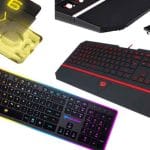
Technology constantly evolves, becoming smaller, lighter, faster, and stronger. With the introduction of new technology, new ideas emerge, fueling the never-ending development cycle. One of these new ideas is the Laser Projection Keyboard that eliminates the need for a physical keyboard.
Laser projection keyboards use low-intensity laser rays to project the footprint of a keyboard onto a work surface, allowing users to type without using a physical keyboard. The keyboards track scans the image, detecting reflected Ir rays to calculate the key position and transmits a signal to the computer.
As more Virtual Reality Gears hit the market, better ways to improve the information stream are needed since the current keyboard technology is inefficient and too large to use. This article focuses on one of those technologies, Laser projection-based Virtual Keyboards. It examines the benefits and drawbacks of employing this technology and a certain UI (User Interface) to obtain maximum wpm (word per min).
What Are Laser Projection Keyboards?
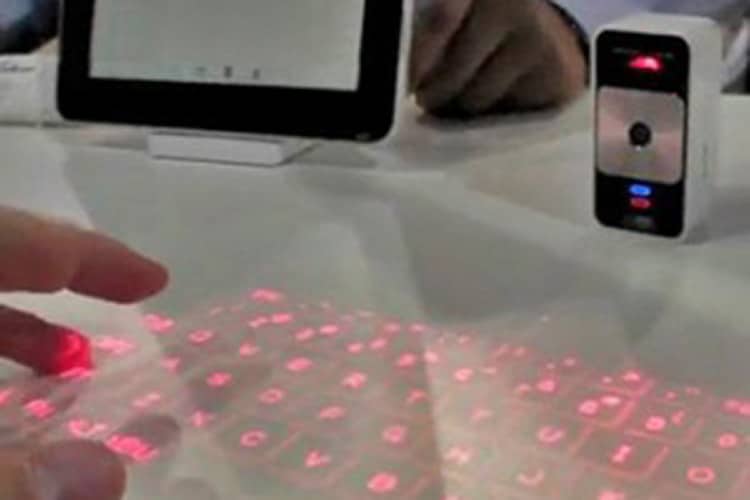
Another example of today’s computing trend of smaller and faster is the virtual keyboard. Computing has made its way into mobile devices, desktops, and laptops. But the input device, the good old QWERTY keyboard, remains unchanged. A tabletop gadget that projects a laser picture of a keyboard on any flat surface is known as virtual keyboard technology.
They are not technological devices; rather, they are a group of lights that resemble a keyboard and function as a keyboard. This procedure employs a gadget that produces LASER light on a flat surface.
The keyboard is created by the LASER light. It generates a detectable surface on which the user does not need to hit the key as they would on a typical keyboard; instead, when the user touches the surface covered by an image of a key, the device records the associated keystroke.
Virtual keyboards have been around for a long time. Using image processing, the motion of the hand was recorded and processed so that it could be simulated on a computer screen. It employs a variety of approaches to achieve the desired o/p. A camera module is the most popular mode utilized by all technicians, and it’s used to record movement. The sort of camera required depends on the situation.
The sort of camera required depends on the situation. A video processing camera or an Ir (Infrared Ray) camera is used in the majority of the cameras. Infrared cameras can detect the motion of objects in low light, but a full-fledged camera is better for jobs that require object detection.
How Do Laser Projection Keyboards Work?

Hologram laser projections of a keyboard are used in laser keyboards. They’re simple to set up and use, and they frequently use USB, Bluetooth, or other wireless connectivity options.
A flat surface is required for a laser keyboard to function, after which the device is placed in front of it. When the laser hole within the keyboard is turned on, it will project a hologram of the keyboard onto a flat surface. A tracking beam is projected onto the surface from the device’s bottom, only covering the hologram.
Simply type on the board as if it were a regular keyboard. The laser tracks any movement on the projected laser keyboard outline, which converts it to real keystrokes and sends them to the screen as input.
What Are The Uses of Laser Projection Keyboards?
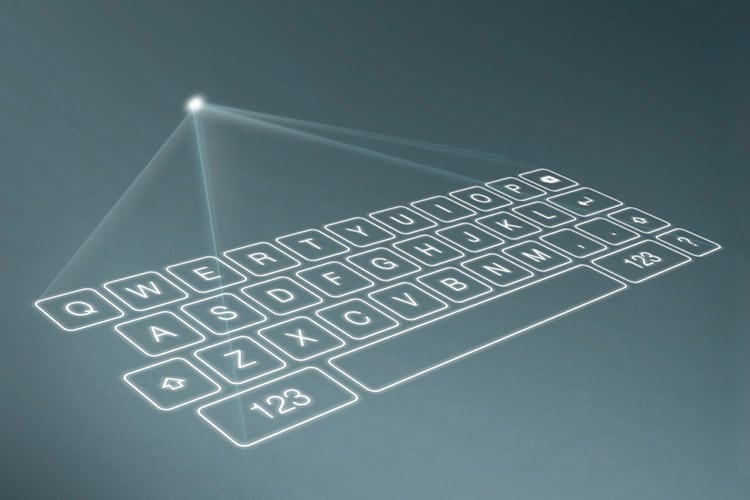
In the operation of computers and other electronic devices, keyboards are crucial. They allow users to enter commands by pressing keys that include letters, numbers, and special characters in the most basic sense. While most computers utilize standard mechanical keyboards, some allow for the use of a projection keyboard. So, what exactly is a projection keyboard, and how does it function?
A projection keyboard is a virtual keyboard projected onto a surface, and the device has a projector that projects a virtual keyboard onto the screen. After the virtual keyboard has been projected, tap the keys to use it like any other keyboard. Apart from structure and design, the only true distinction is that projection keyboards are virtual, whereas standard keyboards are tangible.
The adaptability of a projected keyboard is one of its most appealing features. You can use them on various flat surfaces, including desks, tables, walls, and more. Furthermore, projected keyboards are impervious to dust, filth, and wetness, unlike many standard keyboards. Although the projector or sensor may dirty over time, no physical keys are present, and therefore these or other materials do not affect the virtual keys.
Projection keyboards can be utilized with smartphones, tablets, game consoles, and other devices in addition to desktop and laptop computers.
Are Laser Projection Keyboards Novelty Items?
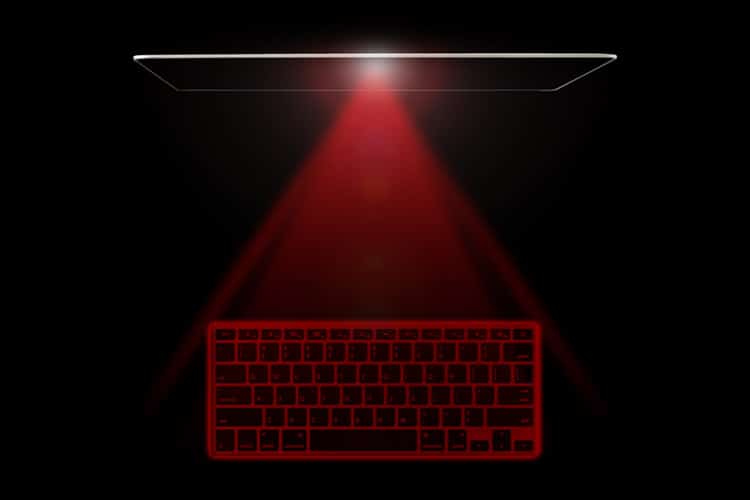
Laser keyboards are certainly cool. However, are they practical keyboards, or are they just novelty items? Well, the answer is both.
These kinds of keyboards are made for certain users. And to those people, laser keyboards provide plenty of value. However, they are not yet in the stage where they can be used as daily drivers.
Compared to other keyboard types such as mechanical keyboards and membrane keyboards, laser projection keyboards lack the speed, precision, and comfort of most available keyboards. And compared to those keyboards, the use case will mostly be limited.
But with that said, most consumers who are getting these already own a dedicated keyboard. So in many ways, these are fun novelty items that you can practically use for certain situations.
Can You Type Fast on Laser Projection Keyboards?
A laser keyboard’s standard typing speed is around 400 characters per minute on average. While this is normal, the exact and proper number depends on your ability to type independently.
Because this is a projected representation of a keyboard, your typing bloc may differ from that of a standard keyboard, which may impair your overall typing speed. Before choosing if this is a good fit for you, make sure you take those into account.
Should You Buy Laser Projection Keyboards?
They’re real, and they’re ready to help you turn your smartphone into a full-fledged computer or laptop. A laser keyboard, straight out of a science fiction film, is futuristic and one of the niftiest inventions of the decade.
A laser keyboard is unique in that the keyboard keys are projected on a solid surface (basically a hologram). It has no physical keys to push and is small enough to fit in the palm of your hand.
Laser Keyboards are still rising, even though this is a relatively new technology. This projection keyboard will help you type more like you have a full keyboard in front of you if your fingers feel tired from typing lengthy letters on your phone or iPad. This isn’t for you if this isn’t a problem for you regularly. This is a wonderful alternative for busy persons on the run who frequently need to complete tasks quickly.
Laser Projection Keyboard Brands
Serafim Laser Keyboard

The Serafim Keybo has a very distinct and user-friendly layout. Unlike typical laser keyboards, the Serafim Keybo has a spherical key design with a stiff and square key layout.
This enhances the entire typing experience by increasing keystroke accuracy. Apart from the standard keyboard configurations, it can also be used as a piano, and its large battery capacity allows you to charge your phone.
Heartbeat Laser Keyboard

The laser keyboard from Heartbeat is next on our list. Advanced features are included in the keyboard to enhance the user experience. This keyboard has a Qwerty layout with circular keys to keep you from accidentally pressing the wrong one.
For maximum convenience, the keyboard features several adjustable choices. You can change the brightness and sound settings and move between two modes. Bluetooth 3.0 is used for connectivity. In addition to the basic functionality, the laser keyboard has a rechargeable battery that you can use to power your phone and other devices.

The KBE team is dedicated to sharing our knowledge and creating useful resources about computer keyboards. This article was written as a team collaboration, combining our knowledge and years of experience using, building and modding keyboards. Meet the team here.

